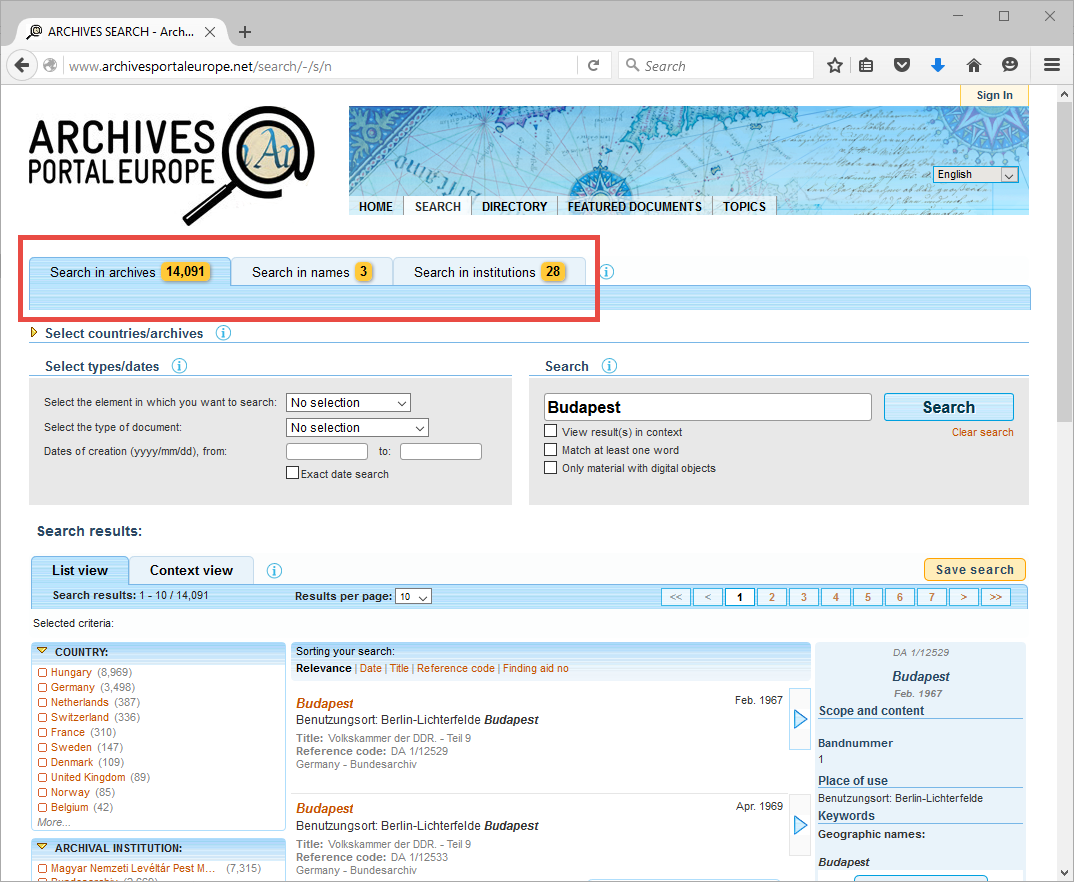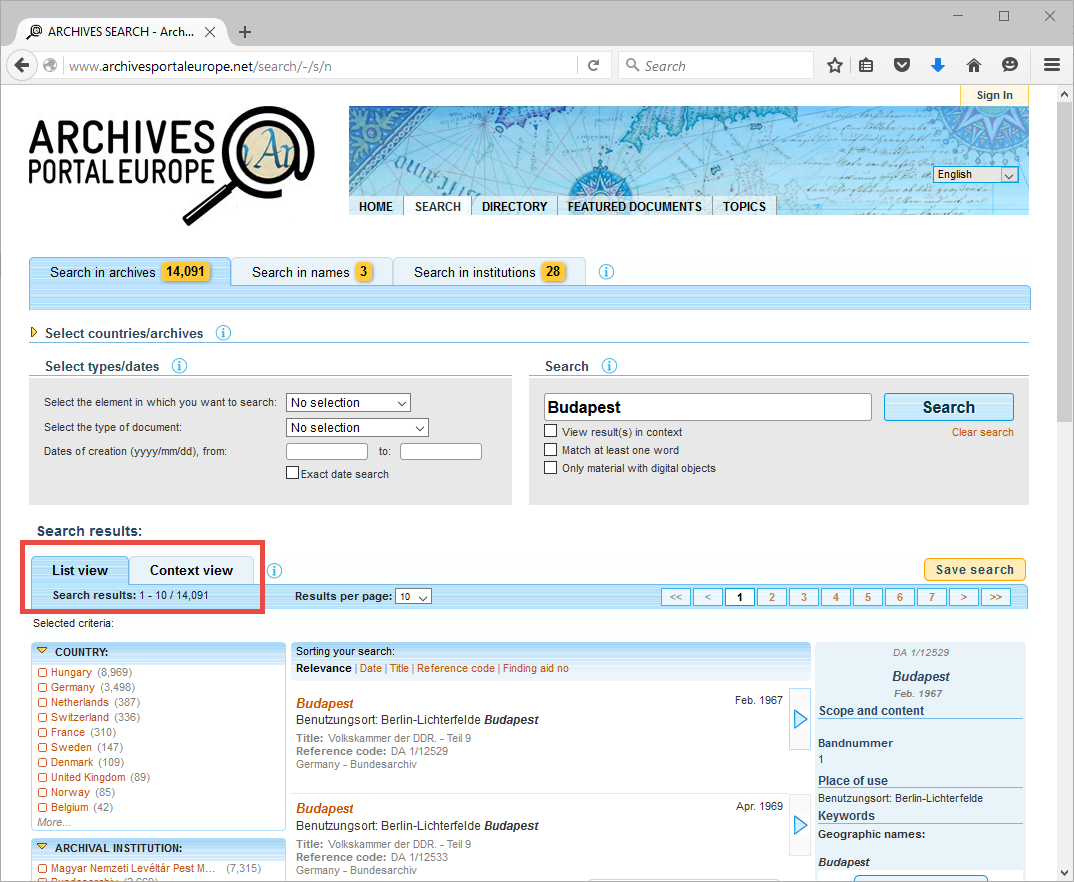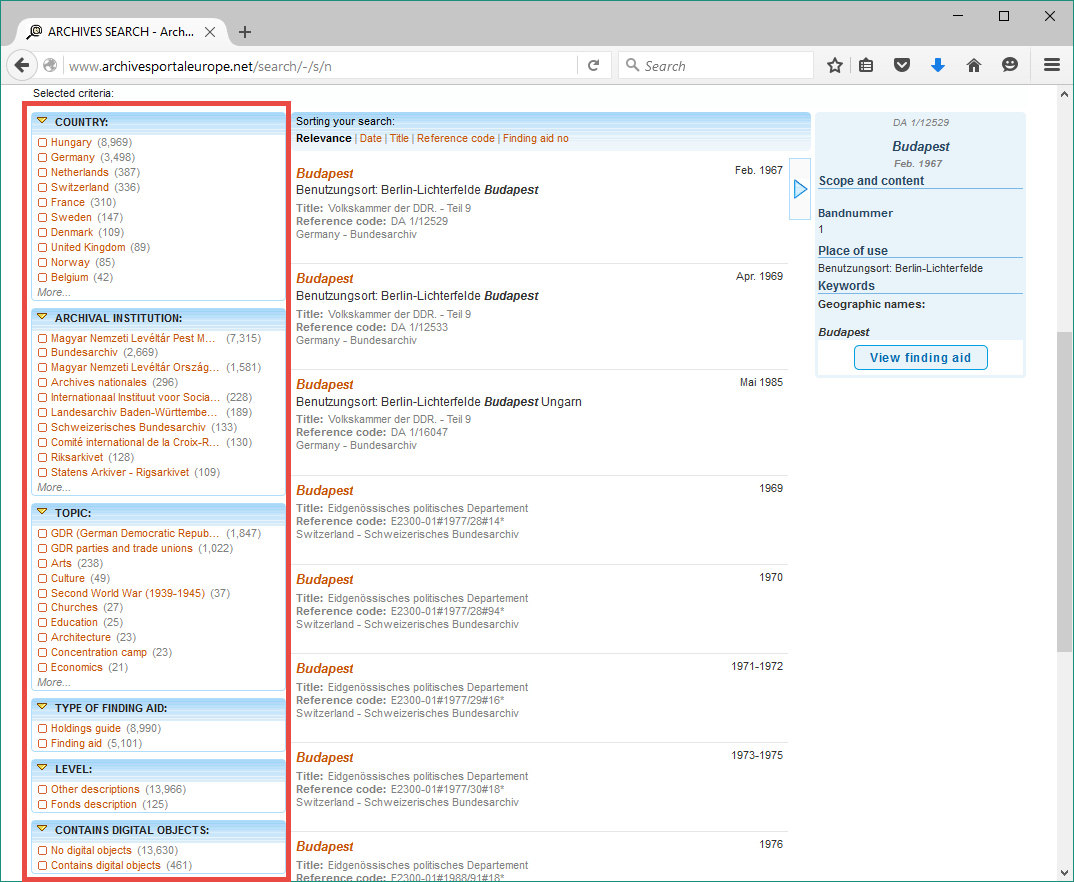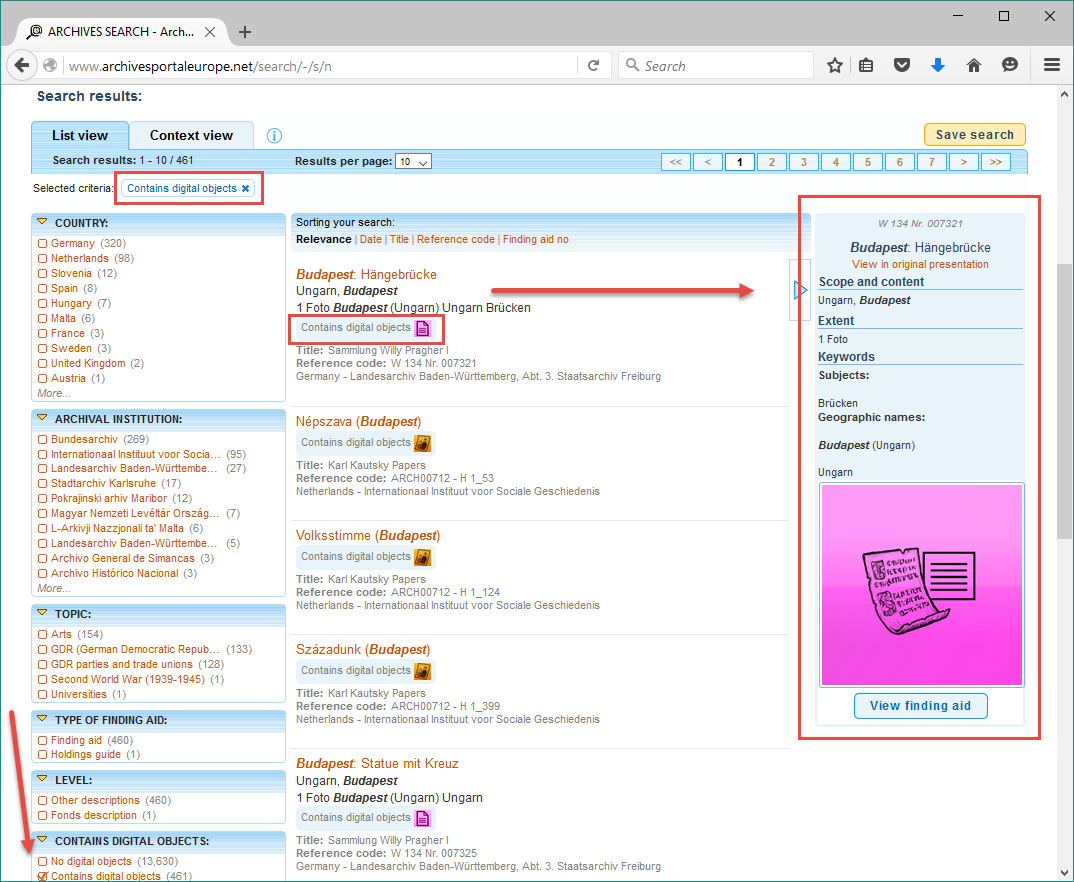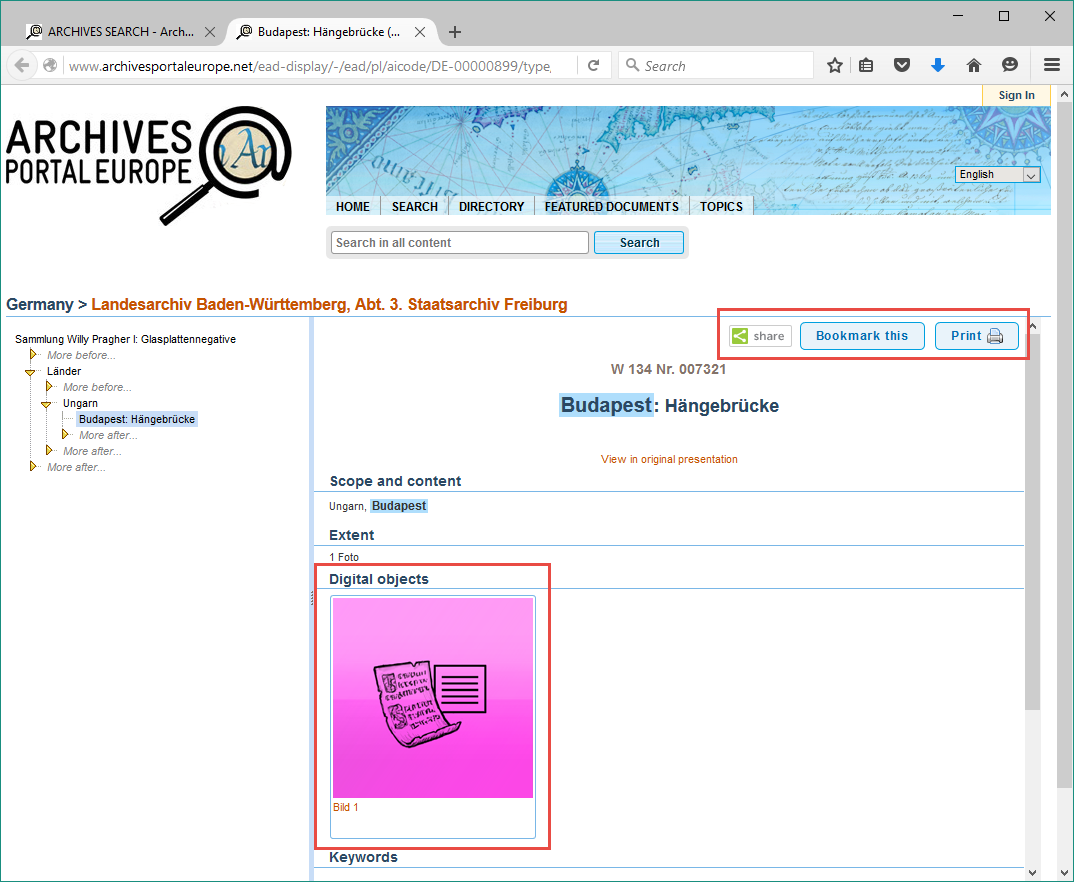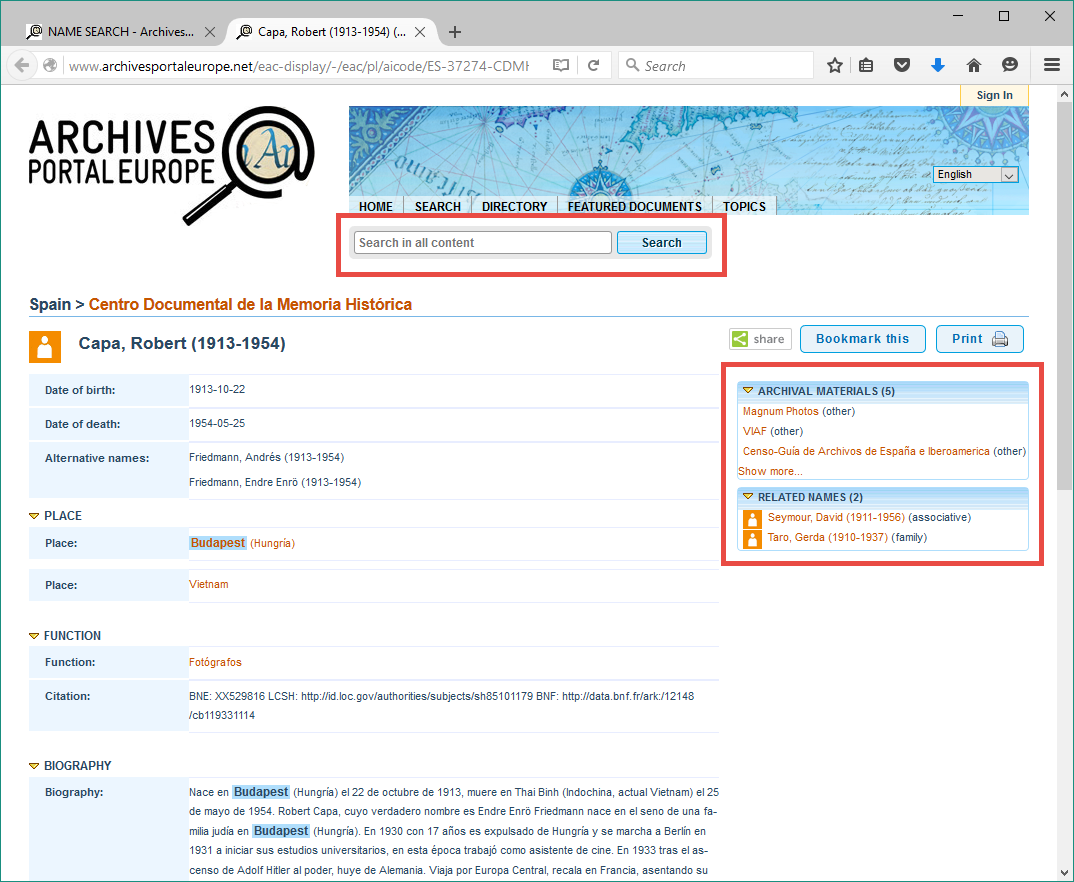Difference between revisions of "Search results"
| Line 7: | Line 7: | ||
<br clear=all> | <br clear=all> | ||
| − | When looking at search results in archives you can select either ''''' | + | When looking at search results in archives you can select either '''''List view''''' or '''''Context view'''''. The context view is just another way to see the results in the hierarchical structure of the archives. Therefore, the number of results is exactly the same as the one you see in the list view. You may understand the results better in the context view because you can look at the single hits grouped by the document to which they belong. It also provides more background information in a broader context. |
Sometimes your search terms are found several times within a finding aid. You can exclude other finding aids and focus on it by using the '''''"View only results from this finding aid"''''' button found next to a search result. | Sometimes your search terms are found several times within a finding aid. You can exclude other finding aids and focus on it by using the '''''"View only results from this finding aid"''''' button found next to a search result. | ||
Revision as of 13:39, 30 April 2016
"1st Display"
A query will return all the results from three different sources ("1st display"). Unless already specified, the results from archives will be presented in a simple list view. By clicking one of the tabs on the top, you can switch to the results from one of the other sources.
When looking at search results in archives you can select either List view or Context view. The context view is just another way to see the results in the hierarchical structure of the archives. Therefore, the number of results is exactly the same as the one you see in the list view. You may understand the results better in the context view because you can look at the single hits grouped by the document to which they belong. It also provides more background information in a broader context.
Sometimes your search terms are found several times within a finding aid. You can exclude other finding aids and focus on it by using the "View only results from this finding aid" button found next to a search result.
You can refine the search results in archives by filling the check boxes on the left by:
- Country (Iceland, Slovenia etc)
- Archival institution (National Archives of Estonia, Stadtarchiv Montabaur etc)
- Topic (Charters, Maps, First World War, Education etc)
- Document types (Finding aid, Holdings guide, Source guide)
- Level (Other description, Fonds description)
- Contains digital objects
- Digital object type (Image, Text, Audio, Video, 3D or Unspecified)
- Date types (Full date, Descriptive date, No date specified etc)
- Start and end timespan (1600–1799 etc)
Remember that you can select your interests from different filters (eg Iceland from Country and Image from Digital object type), select more than one from one filter (eg Iceland and Slovenia from Country) except Start and end timespan.
You can sort the results by Date, Title, Reference code and Finding aid number.
In the tab for search in names, there are different refinement options by:
- Country (Iceland, Slovenia etc)
- Archival institution (National Archives of Estonia, Stadtarchiv Montabaur etc)
- Type of entity (Person, Family or Corporate body)
- Place (Reykjavík, Ljubljana etc)
- Occupation (composer, teacher etc)
- Mandate (Real Decreto de Nueva Planta para el consejo de Guerra de 23-IV-1714. etc)
- Function (geologist, nobles etc)
- Language of description (Italian, Greek etc)
- Date types (Full date, Only descriptive date, Unknown date, Timespan with unknown start date, Timespan with unknown end date)
- Start and end timespan (1600–1799 etc)
In the tab for search in institutions, there are different refinement options by:
- Country (Iceland, Slovenia etc)
- Archival landscape (State Archives in Poznan, archives départementales etc)
- Type of archive (Regional archives, specialised governmental archives etc)
An icon may be displayed in a result in the list view for archives when digital objects are available. You can also check a preview to see the summary of the result. The Save search option for searching in archives is only possible when you create your own account. When saving, search settings (refinement and sorting) will be also preserved.
"2nd display"
When you click one of the results, a new window/tab will open to view the full detail of the result with the keywords highlighted ("2nd display") on the right panefor archival material. From here you can also share, bookmark, and print information. The left pane shows the complete contextual structure of the record (ie the hierarchy within finding aid, holdings guide or source guide). When available, digital object icons and thumbnails are clickable to go to the website of the archival institution, which holds the document in question. At the bottom, you may want to send feedback to the institution.
When accessing the result of a search in names, the "2nd display" sports information on related sources on the right and in addition to the full detail of the result. These relations are grouped by archival materials created by or referencing the described person, family or corporate body, by related entities and by archives that hold the related materials. There also might be a relation to alternative descriptions of the same entity eg in other languages.
The "2nd display" for institutions is divided in an upper part showing a map and a lower part giving the full detail of the result.
The "2nd display" of all sources also allows you to start a new search in all content directly from here.
